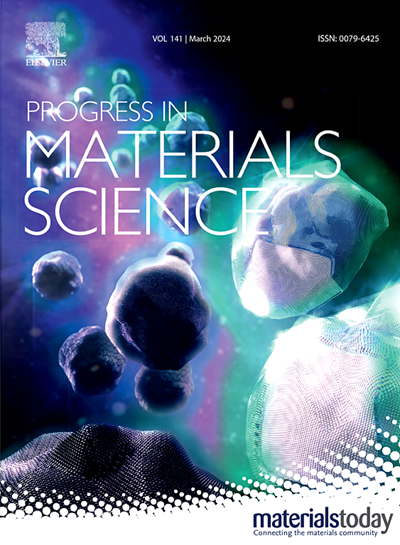Triptycene-based porous organic network polymers: From synthesis to applications
IF 40
1区 材料科学
Q1 MATERIALS SCIENCE, MULTIDISCIPLINARY
引用次数: 0
Abstract
Triptycene, a member of a distinct class of aromatic compounds called iptycenes, has garnered significant attention across various research domains. In recent years, triptycene and its derivatives have emerged as valuable and efficient building blocks for the design and synthesis of novel porous materials with tailored structures and properties. Porous organic polymers (POPs) based on triptycene are organic macromolecules regarded as emerging materials because of their high carbon content, high specific surface area, tunable porosity, low density, high chemical and thermal stability and variable composition. Triptycene-based POPs have demonstrated their competitiveness in various applications, including but not limited to gas storage and separation, water treatment, and catalysis applications. This review comprehensively summarizes recent research on triptycene-based porous organic polymers in materials chemistry.


三苯基多孔有机网状聚合物:从合成到应用
三甲烯是一类独特的芳香族化合物,在各个研究领域引起了极大的关注。近年来,三甲烯及其衍生物已成为设计和合成具有定制结构和性能的新型多孔材料的有价值和有效的基石。基于三甲烯的多孔有机聚合物(POPs)具有高碳含量、高比表面积、孔隙度可调、低密度、高化学稳定性和热稳定性以及组成多变等特点,是一种新兴的有机高分子材料。基于三叶草烯的持久性有机污染物在各种应用中显示出其竞争力,包括但不限于气体储存和分离、水处理和催化应用。本文综述了近年来在材料化学领域中三甲烯基多孔有机聚合物的研究进展。
本文章由计算机程序翻译,如有差异,请以英文原文为准。
求助全文
约1分钟内获得全文
求助全文
来源期刊

Progress in Materials Science
工程技术-材料科学:综合
CiteScore
59.60
自引率
0.80%
发文量
101
审稿时长
11.4 months
期刊介绍:
Progress in Materials Science is a journal that publishes authoritative and critical reviews of recent advances in the science of materials. The focus of the journal is on the fundamental aspects of materials science, particularly those concerning microstructure and nanostructure and their relationship to properties. Emphasis is also placed on the thermodynamics, kinetics, mechanisms, and modeling of processes within materials, as well as the understanding of material properties in engineering and other applications.
The journal welcomes reviews from authors who are active leaders in the field of materials science and have a strong scientific track record. Materials of interest include metallic, ceramic, polymeric, biological, medical, and composite materials in all forms.
Manuscripts submitted to Progress in Materials Science are generally longer than those found in other research journals. While the focus is on invited reviews, interested authors may submit a proposal for consideration. Non-invited manuscripts are required to be preceded by the submission of a proposal. Authors publishing in Progress in Materials Science have the option to publish their research via subscription or open access. Open access publication requires the author or research funder to meet a publication fee (APC).
Abstracting and indexing services for Progress in Materials Science include Current Contents, Science Citation Index Expanded, Materials Science Citation Index, Chemical Abstracts, Engineering Index, INSPEC, and Scopus.
 求助内容:
求助内容: 应助结果提醒方式:
应助结果提醒方式:


